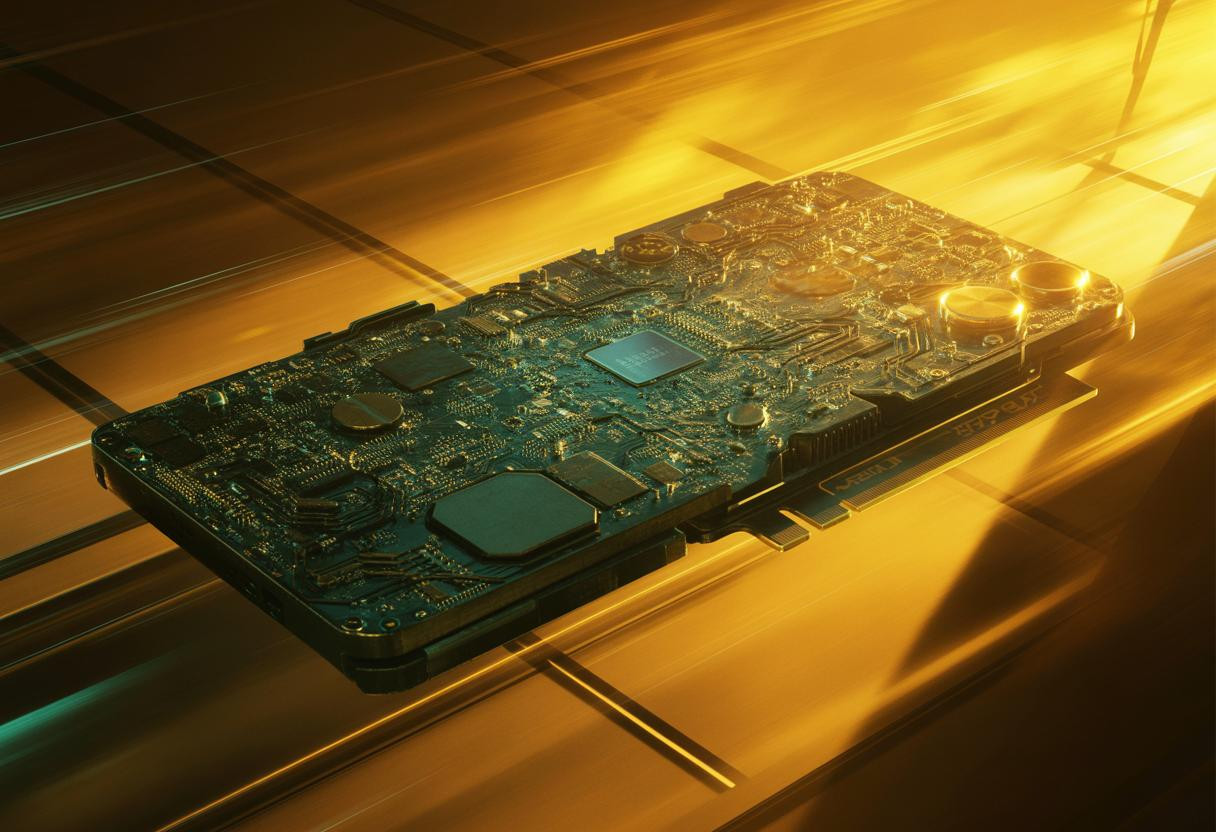NVIDIA’s latest RTX 5090 graphics card is breaking performance records while simultaneously triggering supply chain concerns that could reshape the entire GPU market. Priced at $1,999 and featuring revolutionary cooling technology, this flagship GPU delivers performance gains that have professionals and gamers reconsidering their hardware strategies entirely.
Revolutionary architecture meets market reality
Built on TSMC’s advanced 4nm process with 92.2 billion transistors packed into a massive 750mm² die, the RTX 5090 represents a quantum leap in graphics processing power. The card features 21,760 CUDA cores and introduces NVIDIA’s innovative dual-slot cooling design with 3D vapor chamber technology.
However, early reports indicate production constraints and shipping delays are already impacting availability. Similar challenges previously affected how NVIDIA transformed trade war challenges into unprecedented growth, suggesting the company’s resilience in navigating supply disruptions.
The timing couldn’t be more critical, as the GPU market faces intensifying competition from AMD’s value-focused offerings and Intel’s emerging Arc series.
Performance benchmarks reveal stunning capabilities
Gaming performance exceeds all expectations
Independent testing shows the RTX 5090 achieving 130 FPS average in Black Myth: Wukong at 1440p resolution, representing a remarkable 23% improvement over the RTX 4090’s 106 FPS. These gains stem from the card’s advanced 4th-generation RT cores and massive 32GB GDDR7 memory configuration.
The GDDR7 memory operates at 28 Gbps, delivering 1,792 GB/s bandwidth – nearly double the RTX 4090’s capabilities. This massive memory bandwidth proves crucial for handling complex ray-traced scenes and large texture datasets.
AI acceleration transforms creative workflows
DLSS 4 technology with Multi Frame Generation creates four frames from a single input, enabling frame rates exceeding 500 FPS in supported titles. Professional rendering applications see 30-40% faster performance in Blender’s Cycles renderer, dramatically reducing project timelines.
The 680 5th-generation Tensor cores specifically target AI workloads, making this GPU viable for machine learning applications previously requiring professional-grade hardware.
Power consumption presents significant challenges
The RTX 5090’s 575W Total Graphics Power requirement creates infrastructure demands that many users aren’t prepared for. This 28% increase over the RTX 4090’s 450W draw necessitates high-quality power supplies and robust cooling solutions.
While innovative cooling solutions like revolutionary battery technologies that eliminate fire risks point toward future energy efficiency improvements, current users must invest in upgraded power infrastructure.
Early adopters report that the card’s dual-slot design actually improves thermal management compared to previous triple-slot configurations, despite the increased power draw.
Market positioning creates accessibility concerns
Premium pricing limits adoption
At $1,999, the RTX 5090 commands a 25% premium over the RTX 4090’s launch price, positioning it firmly in luxury territory. This pricing strategy targets professionals and enthusiasts willing to pay for cutting-edge performance.
AMD’s competing 7900 XTX at $999 offers more accessible high-performance gaming, though it lacks DLSS 4 capabilities and trails significantly in ray-tracing performance.
Supply constraints intensify demand
Manufacturing complexities surrounding the advanced 4nm process and sophisticated cooling systems are creating bottlenecks. Industry analysts predict limited availability through the first quarter, potentially driving aftermarket prices even higher.
Professional applications expand beyond gaming
The RTX 5090’s computational capabilities extend far beyond gaming into scientific research and content creation. The massive CUDA core count accelerates climate modeling, protein folding simulations, and other research applications that previously required specialized hardware.
Content creators benefit from hardware-accelerated video encoding and AI-enhanced image processing, while the large VRAM capacity enables handling of complex 3D scenes and high-resolution video projects.
Environmental considerations around the high power consumption echo broader industry discussions about sustainable computing, similar to initiatives like Apple’s material engineering decisions for environmental impact.
Future implications reshape GPU development
The RTX 5090’s AI-centric architecture signals a fundamental shift in GPU design philosophy. Future generations will likely prioritize AI-specialized cores and adaptive power management over raw computational brute force.
This flagship GPU establishes new performance benchmarks while highlighting the growing importance of AI acceleration in consumer graphics hardware. Despite supply challenges and power requirements, the RTX 5090 represents NVIDIA’s successful bet on AI-enhanced graphics becoming the new standard for high-performance computing.
